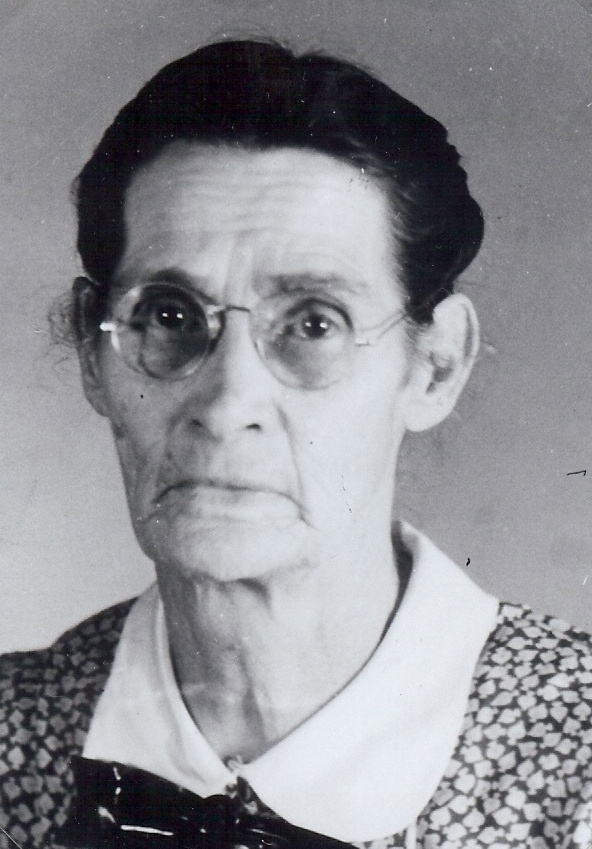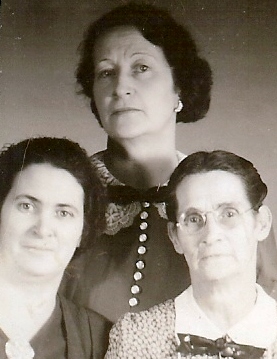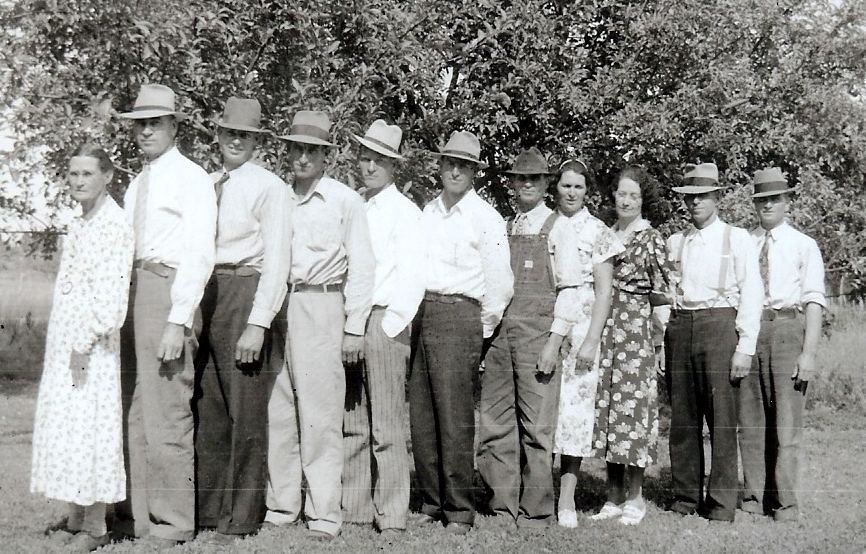
 I was born on November 27, 1866 at Grantsville, Tooele County, Utah, the oldest child of Lorenzo Dowe Mecham and Mary Ann Clark Mecham. I was blessed on December 18, 1866 by James McBride. I was baptized by Gus Johnson in 1875 and confirmed by Joshua W. Clark in the same year.
I was born on November 27, 1866 at Grantsville, Tooele County, Utah, the oldest child of Lorenzo Dowe Mecham and Mary Ann Clark Mecham. I was blessed on December 18, 1866 by James McBride. I was baptized by Gus Johnson in 1875 and confirmed by Joshua W. Clark in the same year.
Shortly after I was baptized, in the year 1875, my family moved to Grouse Creek, Box Elder County, Utah. The summer we arrived there, we lived in a cedar cabin, and in the winter we lived in part of my aunt’s house, while Father herded sheep to support his family of six children. In 1878 we moved to a place of our own about two miles from anyone else. We could not even see another house. There were only about twenty families in Grouse Creek and vicinity at that time, and they were scattered through the hills several miles apart from each other.
We children all helped Father clear the sagebrush to start a farm. We would pile the brush as high as we could, and then at night we would burn them. This provided lots of fun for us children. In the fall of that year, myself, my brother Will and one sister, Emma, walked through the hills about two miles to the schoolhouse every day. We did this until the weather was too bad to go longer.
In July of 1878, the people of Grouse Creek had an Indian scare. Most of the people gathered at a place called the Fletcher ranch. They stayed there for several days, but no Indians came. My mother’s health at this time was not the best and the scare made her worse, so that she could not be moved from the Fletcher ranch for some time. So when the scare subsided, my sister Emma and myself went back and forth to the ranch every day to help take care of things there. This four-mile walk every day was very tiring, so we got the consent of our parents to stay a few nights at our own place. The neighbors were angry to think that they would consent to it, but we were not the least bit afraid. There were no more Indian scares all the rest of the summer.
Shortly after, when mother was able to go home, her newborn baby, Lucinda, took very sick. She became so bad that they sent me to get help. I walked about six miles through the hills, leaving home about 5:00 in the evening and getting back about 10:00 or 11:00. However, the baby died.

Hanna Bell Lee Day, Mary Ellen Lee Warburton & Mary Ann Mecham Lee
The next summer, being about twelve years old, I helped the neighbors with their washing and cleaning. At fifteen, I had a steady job at a Mrs. Egar’s and I worked there until I was eighteen. While I was there, I became acquainted with Joseph B. Lee, who was also working there. I married him on December 11, 1884 at Grouse Creek. We continued our work at Egar’s until 1888. During that time, two sons were born to us, Joseph Valentine and Fearzmore.
Shortly after we were married, just a couple of months, in fact, I became ill with diphtheria. There were no doctors around. I was so terribly sick that I thought I would surely die. I know it was only through the power of the priesthood held by the administering elders who came to me that saved my life at that time.
For six months after we left Egar’s, my husband worked on the railroad at Terrace. From there we moved to the Twelve-Mile ranch in Nevada, so named because it was twelve miles from anyone else. Our daughter, Mary Ellen, was born there.
In January of 1890, our second boy took very sick with a very bad sore throat. We had to take him to a railroad town for help. The snow was three feet deep and we were five hours going twelve miles. The next fall, he became sick again, so we called for our time and moved back to Grouse Creek, not that there were any doctors there, but the people were of our faith, Latter Day Saints.
(Note) The incident above related is but briefly told by Mary Ann. Some who have heard the story say that it was a very faith-promoting experience. The boy was very critically ill, and “Polly,” (Mary Ann) would kneel at his bedside and pray for him several times during the day. Her husband had gone to another small town, and she knew that he would not be back to help her. At the end of the day, the boy was no better. About 10:00, she heard the outside gate of the ranch open, and she rushed to the door to call for help from the cowboys whom she supposed it to be. Instead, it was her father and mother. Her father answered her call with “Yes, Polly, we’re coming to help you.” He told her that they had a strong feeling that she needed help, and they had come prepared with consecrated oil to administer to the boy.)

Mary Ann, Edward, Casper, Lester, Alfred, Lucius, Joseph V, Hannah Bell, Mary Ellen, William & Lorenzo Lee
Back at Grouse Creek, my husband worked at various contracting jobs, haying, cutting posts, etc. Sometimes, he would be gone for several weeks at a time, and I would stay alone and care for the children. In the next five years, three more sons were born to us, Isaac Franklin, William, and Edward.
On October 22, 1896, my husband and I and our six children went through the Salt Lake Temple and had our temple work done. We had owed Albert Richins a considerable store bill and when we went to pay it, we told him that with the very next money we got, we were going to go to the temple. He kindly but forcibly refused to take the money on our bill, and suggested that we go right then to the temple. This we did, and we were never sorry.
Until 1896 we farmed and ranched at what is now known as the Hart place on Etna, which is five miles west of Grouse Creek. Then, in 1897, we moved to Marion, Idaho, where we lived for about eight years. During that time we bought and worked on another small ranch.
Times in Marion were very hard for us. Sometimes, my husband had to go out and work on contracts in order to get enough money to meet the payments for the place. I would be left alone to take care of the children as well as the many chores which had to be done.
While we were at Marion, three more sons and a daughter were born to us, Lorenzo, Hannah Bell, Lucius, and Casper Earl.
In about 1903 we sold the ranch in Marion and returned to Grouse Creek and took up ranching there again. My husband leased what is now known as the Hales place, and that is where another son, Lester, was born. From there, we moved to a little lot on Grouse Creek that we had bought from Charles Kimber. Here, our youngest son, Alfred, was born. And here too, my husband, who then had a sawmill up in the mountains, sawed the logs and lumber with which we built a large, two-storied frame house.
We sent three sons to World War I, and they all returned after the war.
On June 3, 1929 we moved to Heyburn, Idaho, where some of our children were living. On October 11, 1932 my husband died. I have ten sons and two daughters of which I am very proud.
(Note: The above life history was compiled from notes written in her own handwriting. She was very unschooled as to formal education, but was a gentle, patient lady in every sense of the word.)
Mary Ann Mecham Lee died in Heyburn, Idaho on February 20, 1944, and was buried on February 24, 1944 in the Heyburn cemetery beside her husband.
